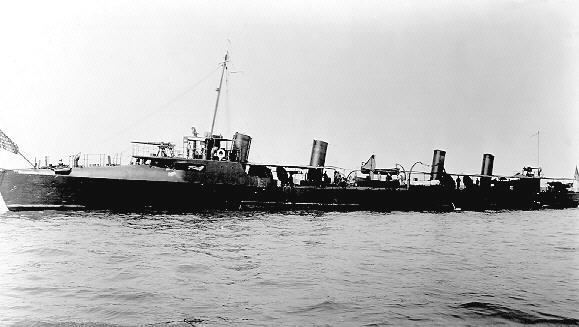Name Truxtun class Preceded by Bainbridge class Built 1899-1902 | Succeeded by Smith class | |
 | ||
Builders Maryland Steel Company, Sparrows Point, Maryland | ||
Three Truxtun-class destroyers were built for the United States Navy. Part of the original 16 destroyers authorized by Congress on 4 May 1898 for the fiscal year 1899 program, they were commissioned in 1902. They were very similar to their Bainbridge-class contemporaries, except for mounting six 6-pounder (57 mm) guns instead of five. They were considered the most successful of the first 16 US Navy destroyers, and were succeeded by the larger Smith class.
Contents
The Truxtuns escorted convoys during World War I. All were sold in 1919 and converted to merchant vessels or scrapped.
Armament
The as-built torpedo armament was two 18-inch (457 mm) torpedo tubes with four torpedoes. The gun armament was two 3-inch (76 mm)/50 caliber guns and six 6-pounder (2.2 in (57 mm)) guns.
During World War I the class was equipped with one or two depth charge racks for the convoy escort mission. Also during World War I, the single torpedo tubes were replaced with two twin torpedo tubes on Truxton and Worden, with the number of torpedoes remaining at four. Whipple was modified with one twin torpedo tube mount and four torpedoes at this time.
Engineering
Truxtun had four Thornycroft boilers supplying 240 psi (1,700 kPa) steam to two vertical triple-expansion engines totaling 8,300 ihp (6,200 kW) (design). She made 29.58 knots (34.0 mph; 54.8 km/h) on trials at 8,300 ihp (6,200 kW). Normal coal capacity was 232 tons.
Service
Truxtun and Whipple served first on the East Coast and later on the West Coast prior to World War I. Worden engaged in reserve training duties on the East Coast and acted as a submarine tender 1914-17. All three served in the Atlantic during the US participation in World War I. Following the Armistice, all were sold for scrapping or merchant conversion in 1919.
Ships in class
The three ships of the Truxtun class were:
